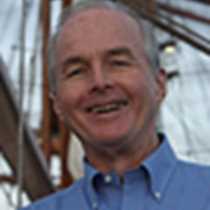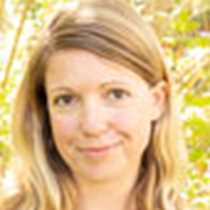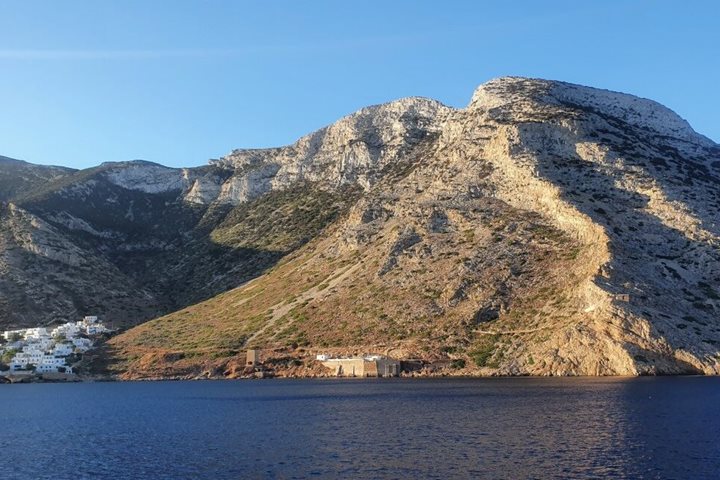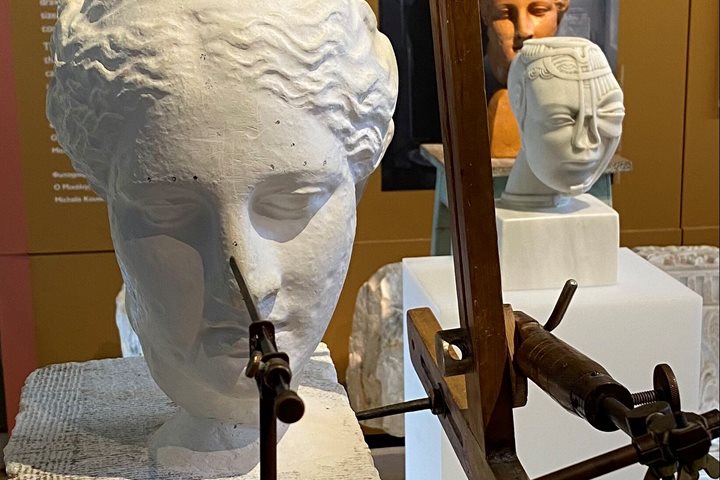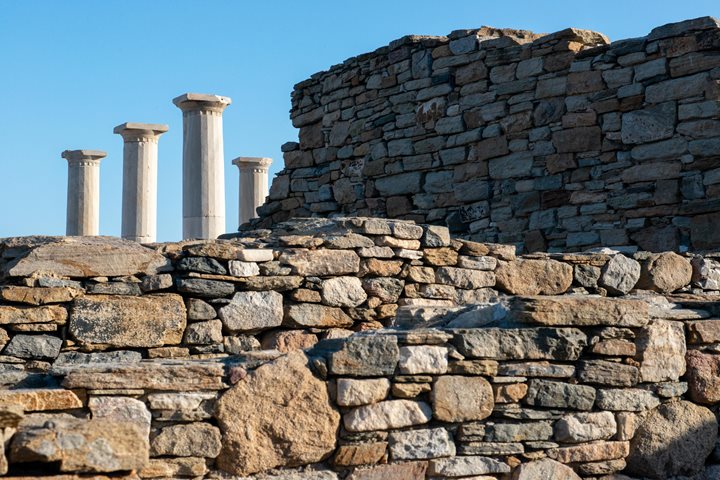We boarded our tenders at 8:15 a.m. and landed at Chora, the main village on the island of Tinos. Our first destination was the village of Pyrgos (the name means “tower”). The ride to this classic Cycladic village―the most beautiful of the 61 villages on the island, in my opinion ―was through rugged mountain valleys covered with ancient terracing. Like most islands in the Cyclades, Tinos is rocky, lacking any depth of soil. The terracing allows for the concentration of soil and conservation of water. As we drove, we passed windmills and Tinos’s famous dovecotes. More than 1,000 of these massive birdhouses dot the island’s landscape. Dovecotes were used as a source of meat (from the birds) and fertilizer (from the guano), and as a system of communication. The structures are very beautiful architecturally, and families often vied with one another to build the most attractive examples.
First, we visited the famous marble museum. There, we saw how marble was quarried and eventually used as an architectural feature, a piece of elegant portraiture, or a tombstone. Pyrgos has been the center of marble quarrying since antiquity, and the industry has given rise to many talented artisans and sculptors, including many of the most famous modern Greek sculptors. We enjoyed a memorable walk through the narrow lanes of the village. In the middle of the square, surrounded by whitewashed cafes with blue doors and windows, stands the most dramatic plane (sycamore) tree. It was planted in 1859, but its circumference today must be 20 feet! Many of us sat and enjoyed Greek coffee and the local sweets.
Our next destination was Our Lady of Tinos. In 1823, a young nun had a dream that a famous old icon was buried beneath where this church now stands. Digging commenced, and the icon was found. Because of this perceived miracle, Our Lady of Tinos has become the most famous pilgrimage church in Greece. We saw a number of pilgrims crawling on their hands and knees. This act of penitence begins at the bottom of many stairs, and culminates in the sanctuary, where the pilgrims receive a special blessing. Today, the priest was chanting and performing a blessing over many large loaves of bread. The sanctuary was crowded, hundreds of beeswax candles burned brightly, and incense filled the air.
After lunch, we set sail at 2:15 p.m. At 3:30 p.m., Sophia and Angelos gave a very informative talk on the pantheon of gods from Greek mythology. Conditions suddenly presented themselves, and we were able to board Zodiacs and take photos of Sea Cloud under sail. After afternoon coffee and cakes, Lauren gave a very useful introduction to the iPhone camera and its possibilities. Next, we are sailing to the culturally significant island of Delos, the birthplace of the twin gods Apollo and Artemis.



